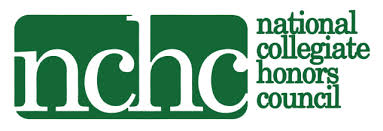Musical Theatre in America
Fine Arts as Global Perspective - HNRS 2113
Instructor(s): Maria Szasz
Course Description
“The Broadway musical has always reflected different social and political forces—patriotism, skepticism, commercial consumption, escapism, revolt and globalization. The musical defines our culture and is, in turn, defined by it.” --Michael Kantor and Laurence Maslon, “Broadway: The American Musical”
Musical Theatre in America will carefully consider one of America’s unique contributions to the fine arts: the musical. We will read, listen to, and watch excerpts from the most revolutionary musicals from 1904-2022, concentrating primarily on American works. The class will extensively discuss the background and major accomplishments of the twentieth and twenty-first century’s most significant musical theatre composers, lyricists, writers, actors, dancers, choreographers, directors, designers, and producers.
This class is, first and foremost, interdisciplinary. We will frequently discuss how the disciplines of theatre and history interact and co-exist. For instance, what do musicals say about American history? “South Pacific” suggests that racism “has to be carefully taught”; “Hair” defiantly and poignantly protests the Vietnam War; “Hamilton” celebrates American energy, drive and spirit. Our discussions will pay special attention to the ways musicals engage and respond to the major historical, political and social issues of their day.
We begin in the early years of the twentieth century, with the charismatic “song and dance man” George M. Cohan, whose upbeat, sassy songs and heroes in “Little Johnny Jones” (1904) and “George Washington, Jr.” (1906) jump-started American musical comedy. Through “Oklahoma!” (1943), “South Pacific” (1949), and “West Side Story” (1957), we explore what made the Golden Age of American musical theatre so rich, creative, and admired. In the 1960s-1970s, we determine why both the form and content of musicals radically changed, with the bold introduction of “rock musicals” such as “Hair: The American Tribal Love-Rock Musical” (1968) and “concept musicals” such as “Company” (1970) and “A Chorus Line” (1975). In the 1980s-1990s, we focus on the “British Revolution,” with the arrival of the Megamusicals “Cats” (1982) and “Les Misérables” (1987). We conclude by examining the most recent developments in musical theatre that invigorate theatergoers, such as “Hamilton” (2015), “Dear Evan Hansen” (2016), and “Six (2021).
Our primary goal is to reach an understanding and appreciation of this eclectic, vibrant, innovative form of theatre that entertains and challenges audiences worldwide.
Texts
George M. Cohan, “Little Johnny Jones” (1904)
Oscar Hammerstein II and Jerome Kern, “Show Boat” (1927)
Oscar Hammerstein II and Richard Rodgers, “Oklahoma!” (1943) and “South Pacific” (1949)
Fred Saidy, E. Y. Harburg, and Burton Lane, “Finian’s Rainbow” (1947)
Leonard Bernstein, Arthur Laurents and Stephen Sondheim, “West Side Story” (1957)
Gerome Ragni, James Rado and Galt MacDermot, “Hair: The American Tribal Love-Rock Musical” (1968)
Stephen Sondheim and George Furth, “Company” (1970)
James Kirkwood, Nicholas Dante, Marvin Hamlisch and Edward Kleban, “A Chorus Line” (1975)
Claude-Michel Schönberg and Alain Boublil, “Les Misérables” (1987)
Jonathan Larson, “Rent” (1996)
Lin-Manuel Miranda, “Hamilton” (2015)
Lucy Moss and Toby Marlow, “Six” (2021)



Social Media
For news, information, prizes and more fun stuff follow us on our social media!
Honors College Resources